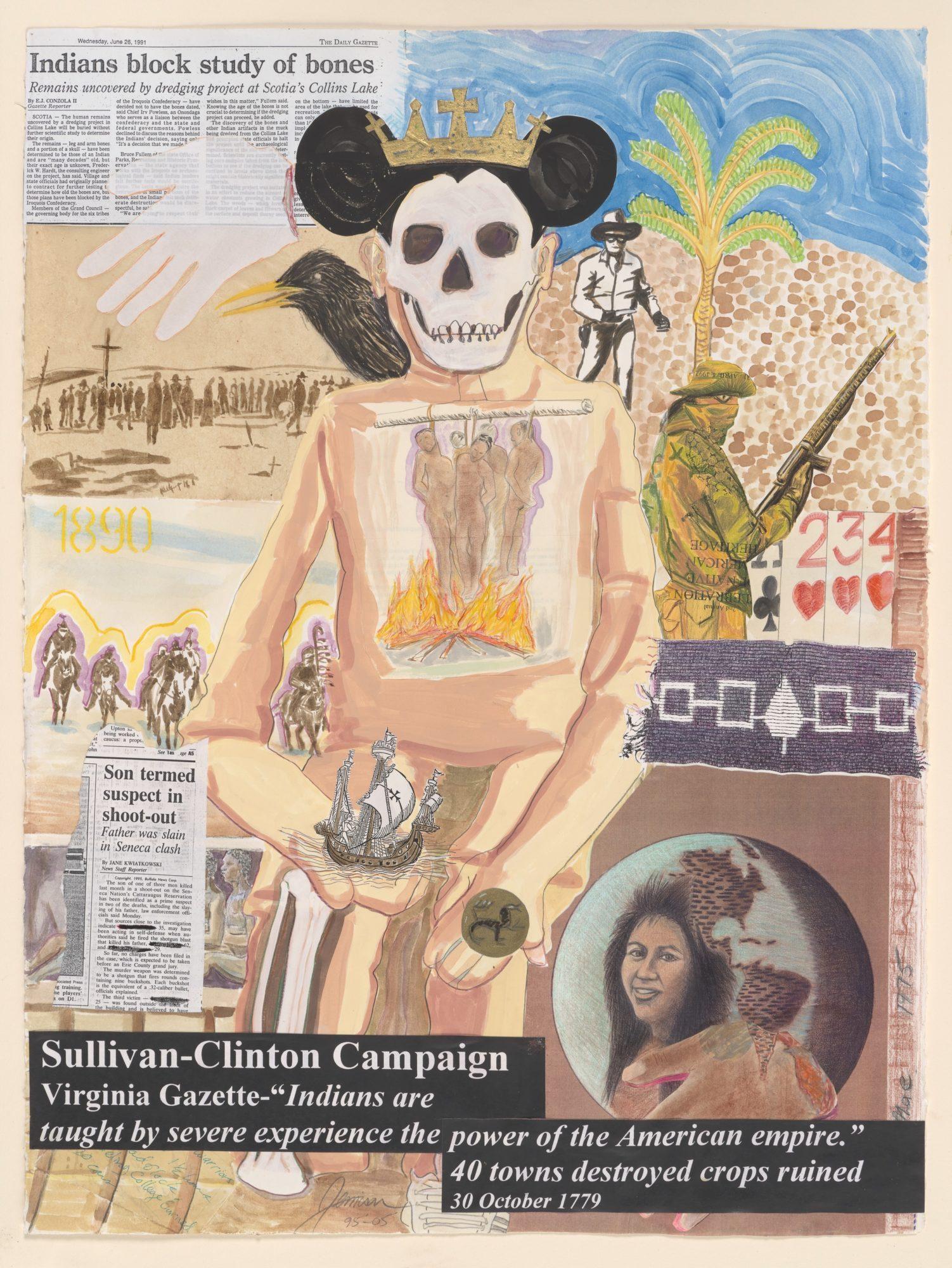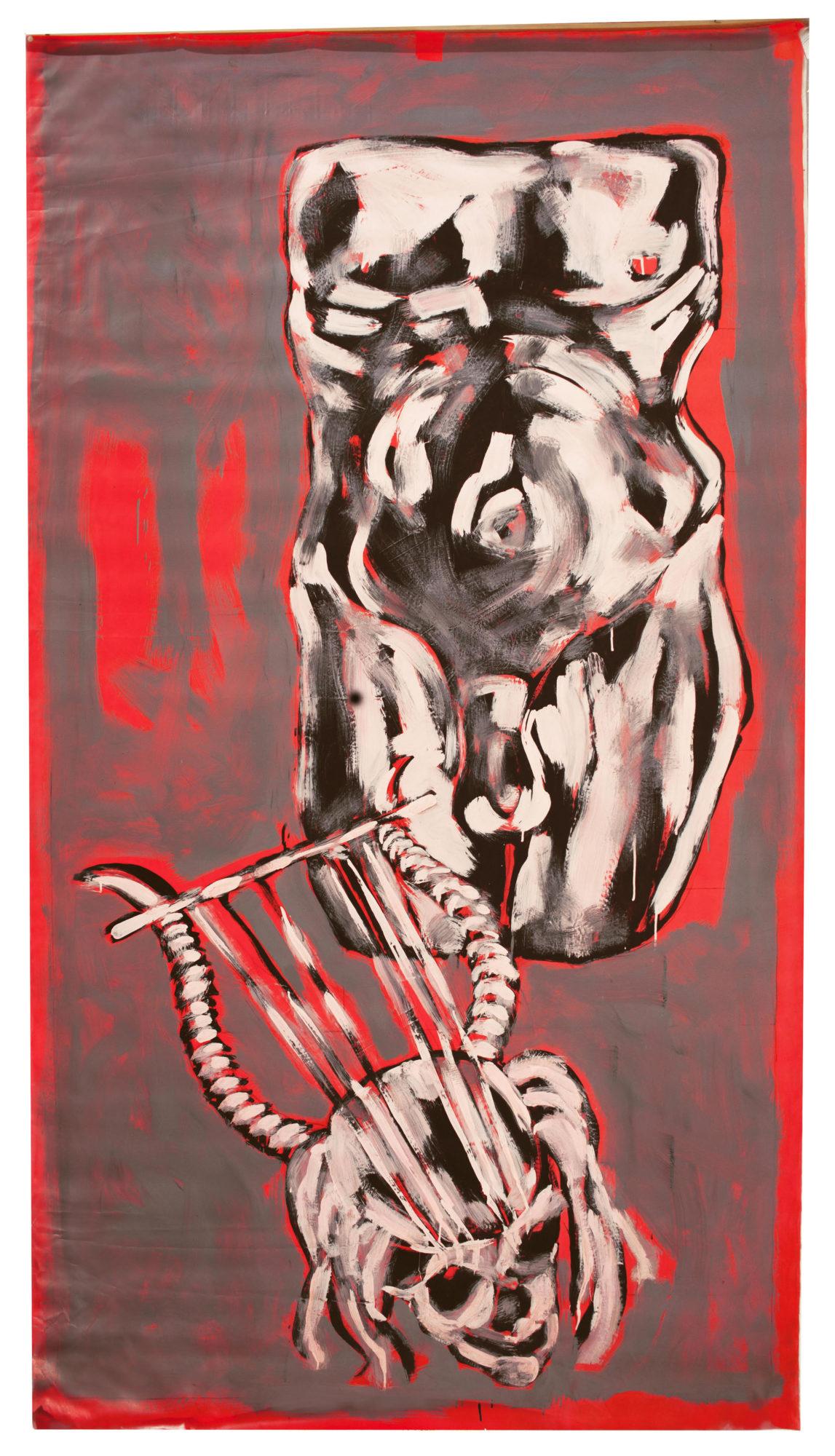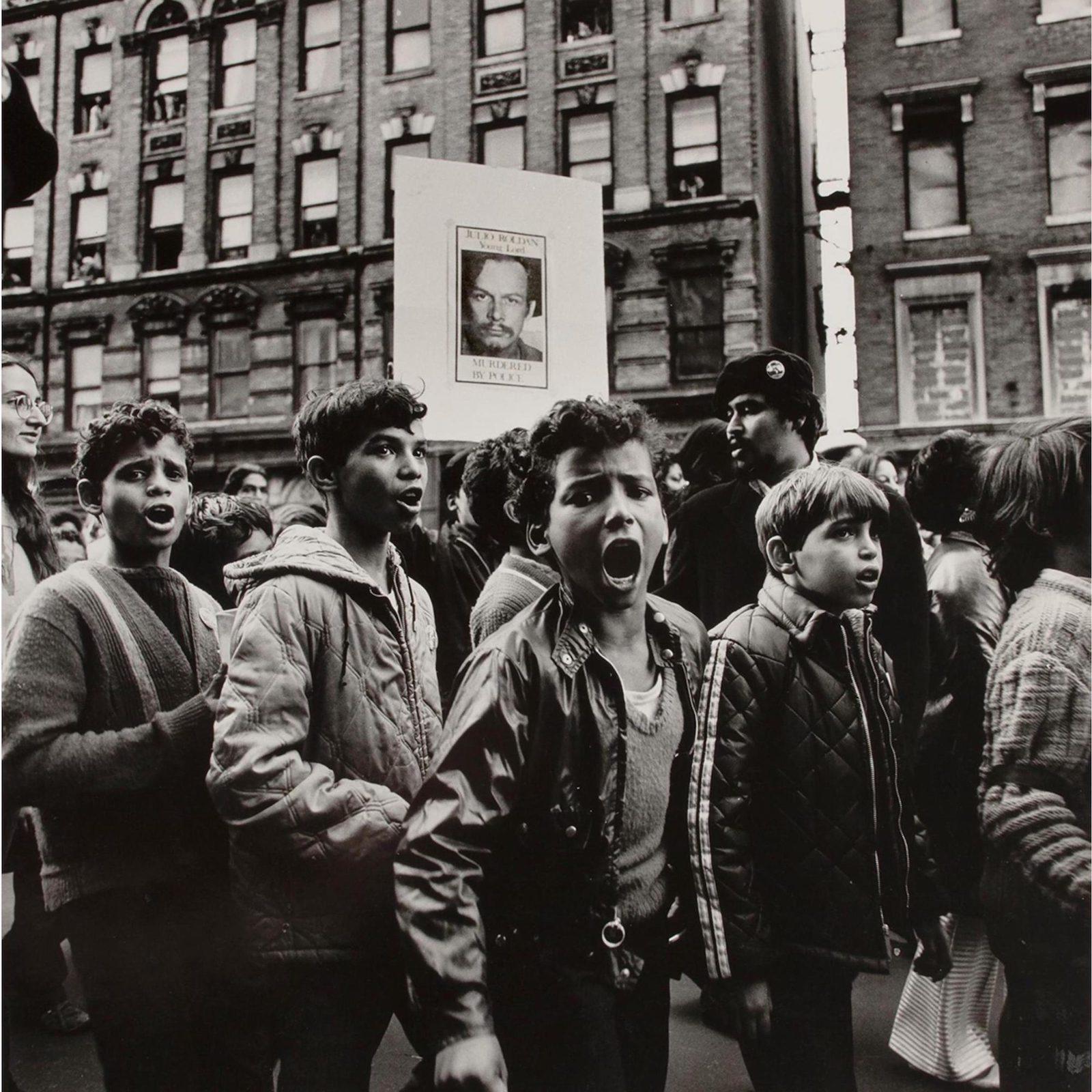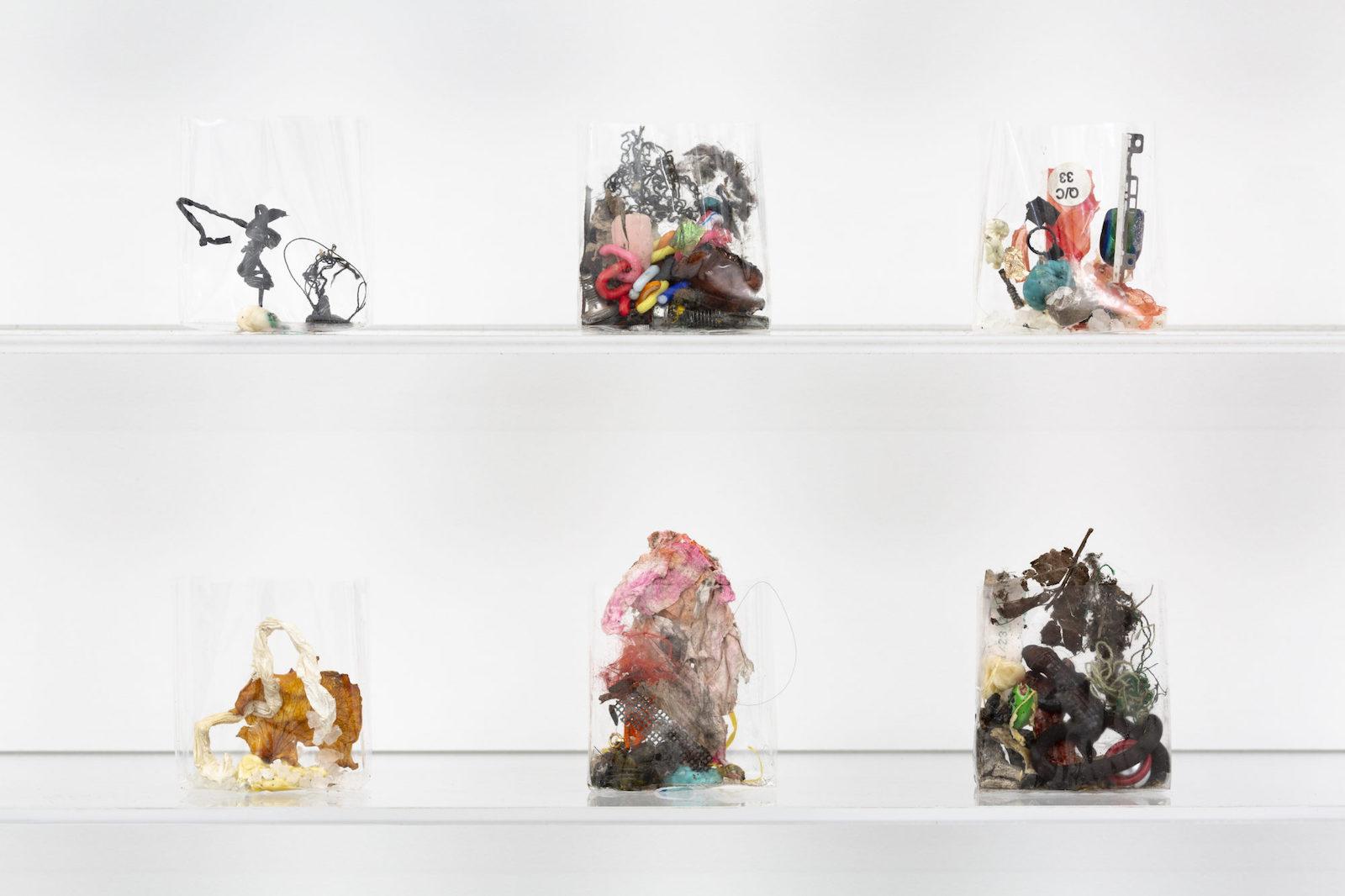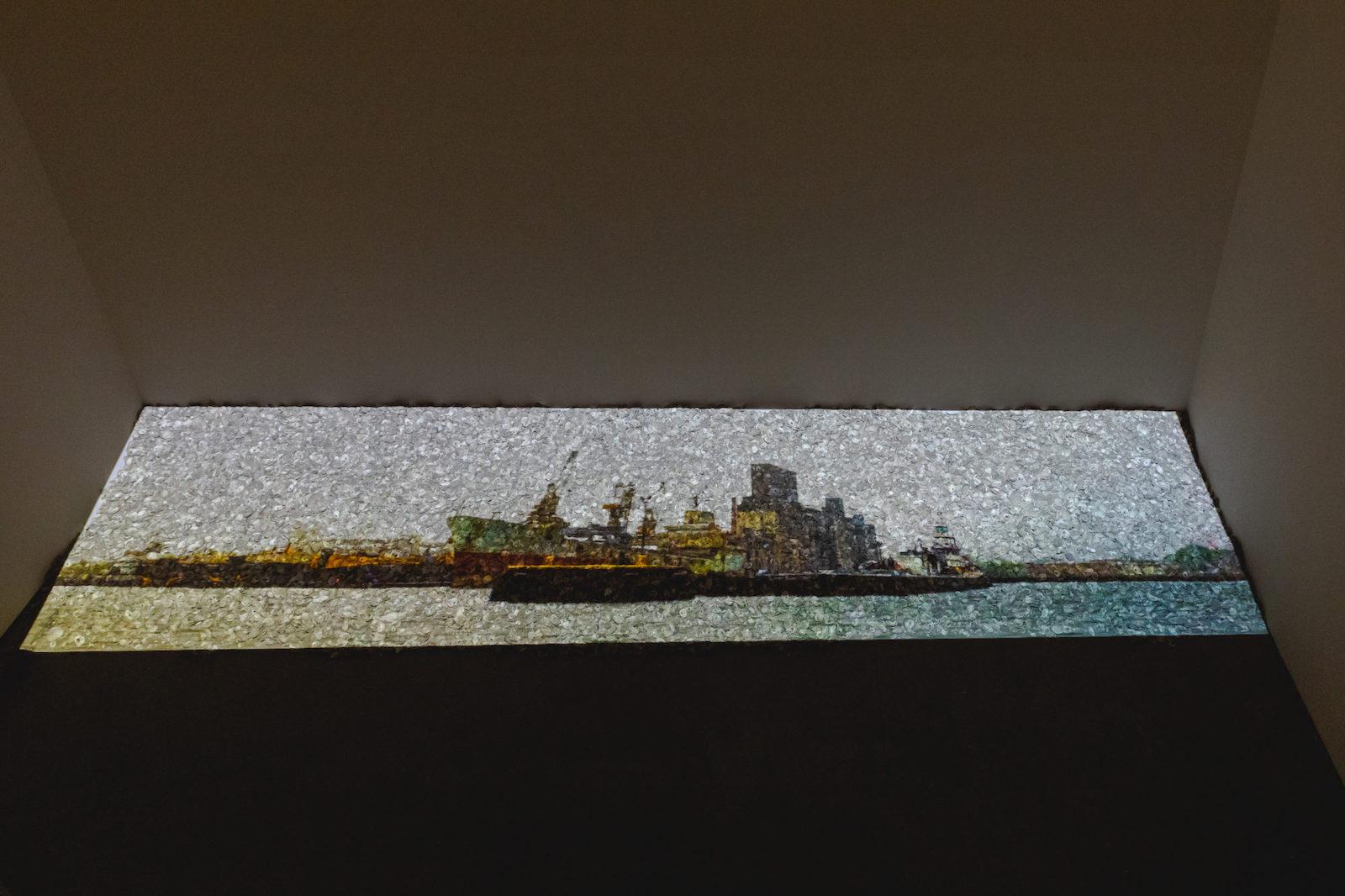Greater New York has always drawn upon locally-based artists and its stated objective here is to excavate the layers of identity and history that have been mapped onto the city by its constant rebuilding and incessant influx of immigrants (echoed by the show’s geographical diversity of artists). For each generation, New York alters itself beyond recognition, a capitalist palimpsest where one memory of the city “when it used to be great” is erased for another—a process that’s continued unabated since Henry Hudson first sailed up the river bearing his name in 1609.
The calamitous consequences for the indigenous population over the centuries that followed are noted by Indigenous American artists G. Peter Jemison and Alan Michelson. Jemison evokes a legacy of exploitation and ethnic cleansing with a drawing featuring a skull-faced figure wearing Mickey Mouse ears. Alan Michelson looks back more in sorrow than in anger with a video installation recalling the abundant oyster beds in the Gowanus Canal and Newton Creek before settlers ate and polluted them out of existence.





